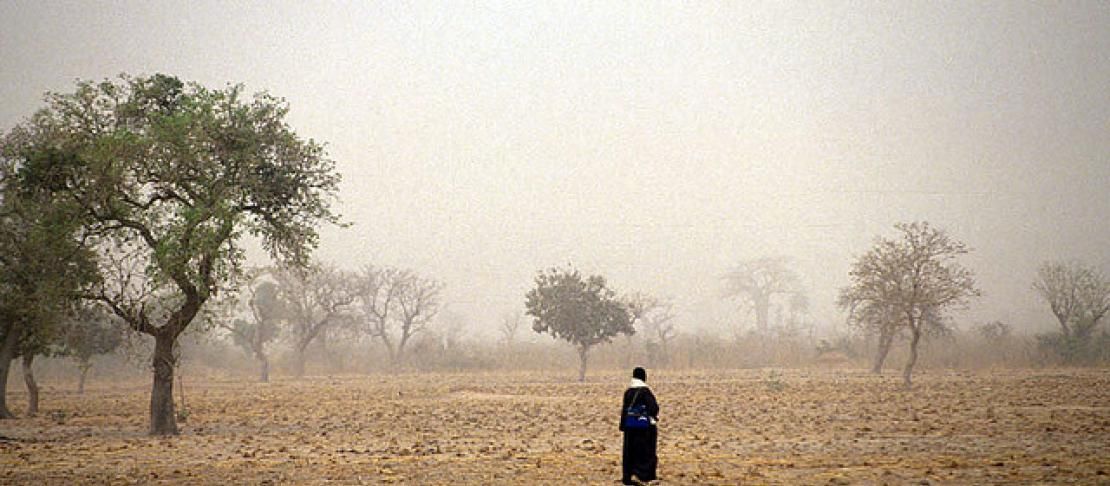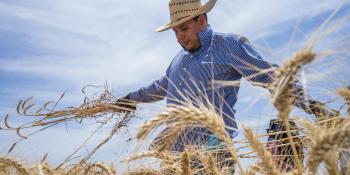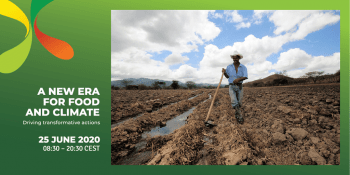Risk management as a strategy for landscape management

Too often, when we talk about agriculture, we talk about crops: crop seeds, crop technologies, crop yields, crop failures. But agriculture is about more than crops. It is about fishing, and livestock too. And landscapes are about more than agriculture; they are about forests, soil, water and the atmosphere. And they are where people build their homes and communities.
They are complex systems.
We have learnt the hard way that activities in one area can cause vibrations into others. In Brazil, soybean was once thought of as a benign alternative to agriculture-led rainforest destruction, we now see that it actually causes massive habitat loss. And in Niger, we have learnt, through their destruction, how valuable field trees are for water- and soil-conservation.
We need to stop learning these lessons in hindsight. And to do that we need to stop looking at forests, fisheries, crops, livestock, soil, water, and the atmosphere in isolation. We need a landscape approach.
The sheer complexity of a landscape approach can be overwhelming. There is no one model of a landscape, every landscape is different. And there is no one model of what smallholders do in a landscape, people are different.
There are many knowledge gaps.
We still lack a systematic understanding of how all these different elements impact each other, how they compete for resources and how they can share resources. We also lack a systematic understanding of how policies and practices designed to benefit one element might impact another, and whether those impacts are bad or good. And we lack a systematic understanding of whether what works today, will also work tomorrow. Landscapes are not just complex - they are dynamic and are changing fast.
But there is a lot we do know. And we are quickly developing strategies for identifying trade-offs and synergies.
Strategies to take us forward
We can start by seeking out synergies and then concentrate investment into those areas to maximize benefits. CCAFS has already been making much head-way using this tactic.
Or we can work from the other end, focus on the worst-case scenarios and work backwards to minimize risk, explained Elwyn Grainger Jones of the International Fund for Agricultural Development (IFAD), speaking at a special discussion forum at Global Landscape Day on Farm and smallholder opportunities: Synergies and opportunities for integrating agriculture, trees and forests.
Risk minimization as a strategy for managing landscapes
IFAD has been working in Yemen for years, looking at soil conservation management and water management. Now, climate change has brought new challenges, one being an increasing rate of natural disasters and a need to minimize risks.
"In Yemen, there hadn't been any climate-risk analysis which weren't generic national studies so first we had to identify what the risks are", said Jones. IFAD used GIS to map flash flooding and soil erosion risks, and to identify hot spots for risks. Models were then developed which considered all types of data, not just soil and meteorological factors - but also social and economic factors.
The results can be a powerful tool for landscape management.
For instance, it is well known that trees are a powerful weapon against soil erosion and flash flooding. IFAD's approach has the potential to make them even more powerful by identifying the exact areas in Yemen where it is more economically sensible to retain trees than cut them down.
Putting people at the centre
The risk minimization strategy is commanding as a strategy for landscape management, because it doesn't just look at the trade-offs between different environmental and agricultural practices and policies as measured against crop yields or environmental impacts. It puts people at the center of analysis. It is about minimizing the risks they face and trying to secure not only their resources, but their incomes, homes and communities as well.
With the rising rate of disasters, risk minimization was always going to be an important strategy for planning our futures. With the new emphasis on landscape level analysis, it is increasingly looking like a winning way forward.
Read more:
Explore CCAFS' work on risk minimization
The good, the bad and the ugly: how climate change will impact Africa
Can climate-smart agriculture and forests work together at the landscape level
Lucy Holt works with communications for the CCAFS Coordinating Unit.
The CCAFS team is reporting live from the UNFCCC climate talks in Warsaw, 11-22 November 2013. Click to read all of our coverage. For live updates from the Climate talks in Warsaw, follow us on twitter @cgiarclimate and @bcampbell_CGIAR. Join the conversation using #GLFCOP19.



